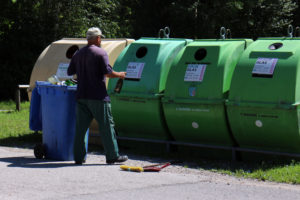You can always measure inflation by how the price of certain products or services has changed. Things like a gallon of milk, a postage stamp and, even, public transport. “It use to be a nickel for the subway, “ says George Capsis, a 90 year old native New Yorker. “A nickel,” he repeats for good measure and then pauses to digest the passage of time. These days that same subway ride will cost you $2.75 one-way. To be fair, the Big Apple is an expensive city anyway, but things have changed all over the world. A nickel won’t get you as far as it use to, even in places where the American dollar will get you a pretty penny in local currency. Take, for example, Turkey. A subway ride in Istanbul, the historic capital that connects the East to the West and was the birthplace of modern Christianity, will run you forty cents American- or 2.60 Turkish lira.
City officials in Istanbul have realized that the subway fare was weighing down many denizens of their city and therefore have have figured out a way to kill two birds with one kuru (the Turkish equivalent to the penny). Recently, a recycling program rolled out in which machines were installed in subway stations throughout the city that allows riders to recycle in exchange for credits toward a subway fare. Not all recyclables are created equal: a 1.5 liter plastic bottle will get an Istanbulite six kurus toward that 2.60, while a .5 liter aluminum can will rake in a whopping nine kurus.
 While the effort towards a greener footprint is laudable, and will surely have some sort of effect, it begs the question: is it the best way to go about instilling good recycling habits? Scientists say, “Not really.” It’ll work, sure, but only so long as the incentives are there. Recyclers that are rewarded inevitably associate value to the material compensation they’ve been given. Take away the carrot, and the can gets kicked down the street instead of into the recycling bin.
While the effort towards a greener footprint is laudable, and will surely have some sort of effect, it begs the question: is it the best way to go about instilling good recycling habits? Scientists say, “Not really.” It’ll work, sure, but only so long as the incentives are there. Recyclers that are rewarded inevitably associate value to the material compensation they’ve been given. Take away the carrot, and the can gets kicked down the street instead of into the recycling bin.
Then there’s the stick. Next year will mark the 30-year anniversary of New York’s mandatory recycling policy for residential properties. The slaps on the wrist for not recycling properly gets progressively firmer, with the fine for the first offense at $25, the second at $50, and the third at $100. Though there is room for improvement, the program has been fairly successful with a 44% capture rate (that is to say that 56% isn’t recycled properly). By comparison, the city’s commercial recycling capture rate is a ghastly 21%, which critics say is due to little to no enforcement. It’s certainly a long way to go to reach New York’s Zero Waste goal by 2030.
So, the carrot is effective but it’s full of empty calories, and the stick is a great motivator as long as there’s a good whack every once in a while. What about for the average, everyday Joe? The first step is to realize that there’s nothing average about Joe. Experts agree that the power of influence can do wonders. Human’s are social animals and everyone has the ability to make a difference.
If you want to turn the tide in your household, there are three things you can start doing that will change the game:
- Take the lead! If you recycle and people see you doing so, they are more likely to follow in your footsteps.
- Blab it up! Although it’s not always obvious, people are rational. If you share your passion for recycling and why you think it matters, it’ll sink in. They’ll start recycling because they’ll believe in the value of it.
- Show it off! A study found that crushed aluminum cans were less likely to get recycled than their prettier counterparts. The researchers believe that this is because it seems like crushed cans were somehow less useful. People like to believe their efforts are bearing fruit. So surround yourself and your friends, family, coworkers and roommates with products made from recycled materials. You can get the wildest things these days!
It all starts with believing that you can make a difference. If you do that, you’ll inspire someone else to believe they can make a difference, and that’s how a movement is born.



